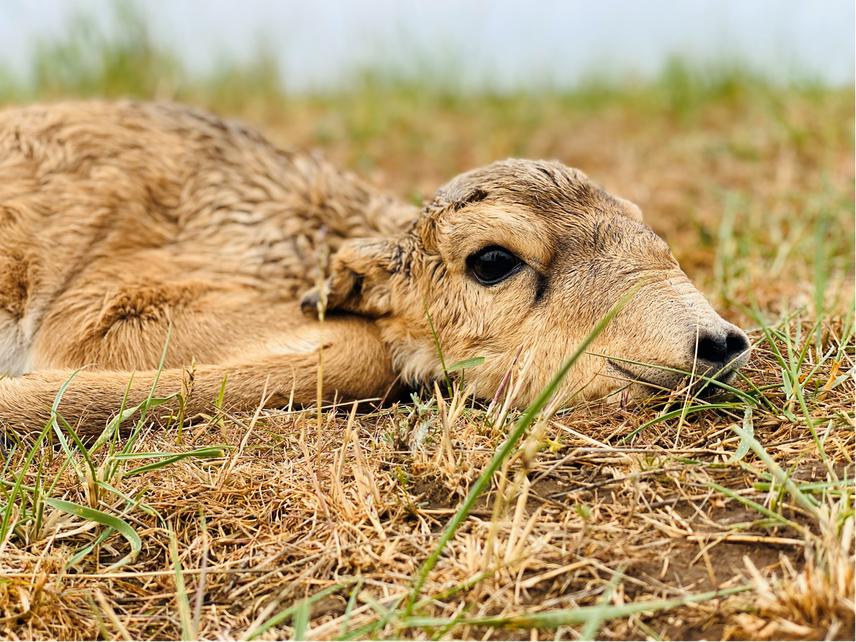Aibat Muzbay
The saiga antelope (classified as Critically Endangered on the IUCN Red List) was once prevalent across Eastern Europe and Central Asia. However, due to poaching and changes in land use, there has been a significant reduction in its range and population size. Presently, 98% of the global population is concentrated in Kazakhstan, divided into three isolated populations: Ural, Betpakdala, and Ustyurt. The increase in the Ural saiga population marks a notable conservation success. Nevertheless, local farmers have begun expressing concerns about competition for forage between saiga and livestock, as well as damage to hayfields and croplands caused by saiga.

Newborn saiga calve in the Zhanibek district. During May thousands of saiga female gathering in Zhanibek district to give a birth to future saiga generation. © Aibat Muzbay.
The research aims to enhance our understanding of the impact of saiga and livestock grazing on pasture vegetation, the carrying capacity of the steppe ecosystem, and any resulting competition. The study will concentrate on identifying vegetation types and biomass production in saiga habitats, especially in calving areas, along with the distribution of livestock, hayfields, and croplands. Unique data on saiga's use of plant biomass in calving areas will be collected and analyzed, a task not previously undertaken in the region. Additionally, vegetation conditions in these areas post-calving will be closely monitored to assess the extent to which saigas can reduce plant production and how quickly the area can recover. Furthermore, the study will closely monitor the number and diversity of livestock and their grazing areas, with a particular emphasis on potential contact with saigas during calving.
This research aims to answer critical questions, such as the impact of saiga calving aggregation on vegetation types and green biomass production at calving sites. These findings will aid in identifying problems, proposing alternative solutions, and determining the ecological carrying capacity of the area. The study will contribute to the development of a saiga management approach for the Ural population, ensuring the long-term survival of this species for future generations by identifying the optimal level of saiga use.
Header: A small group of saiga antelope (about 200 individuals) grazes in a hayfield in the Zhanibek region. Farmers often see such cases and complain that saiga trample their hayfields. © Nurlykhan Ismailov.